Refund Guaranteed
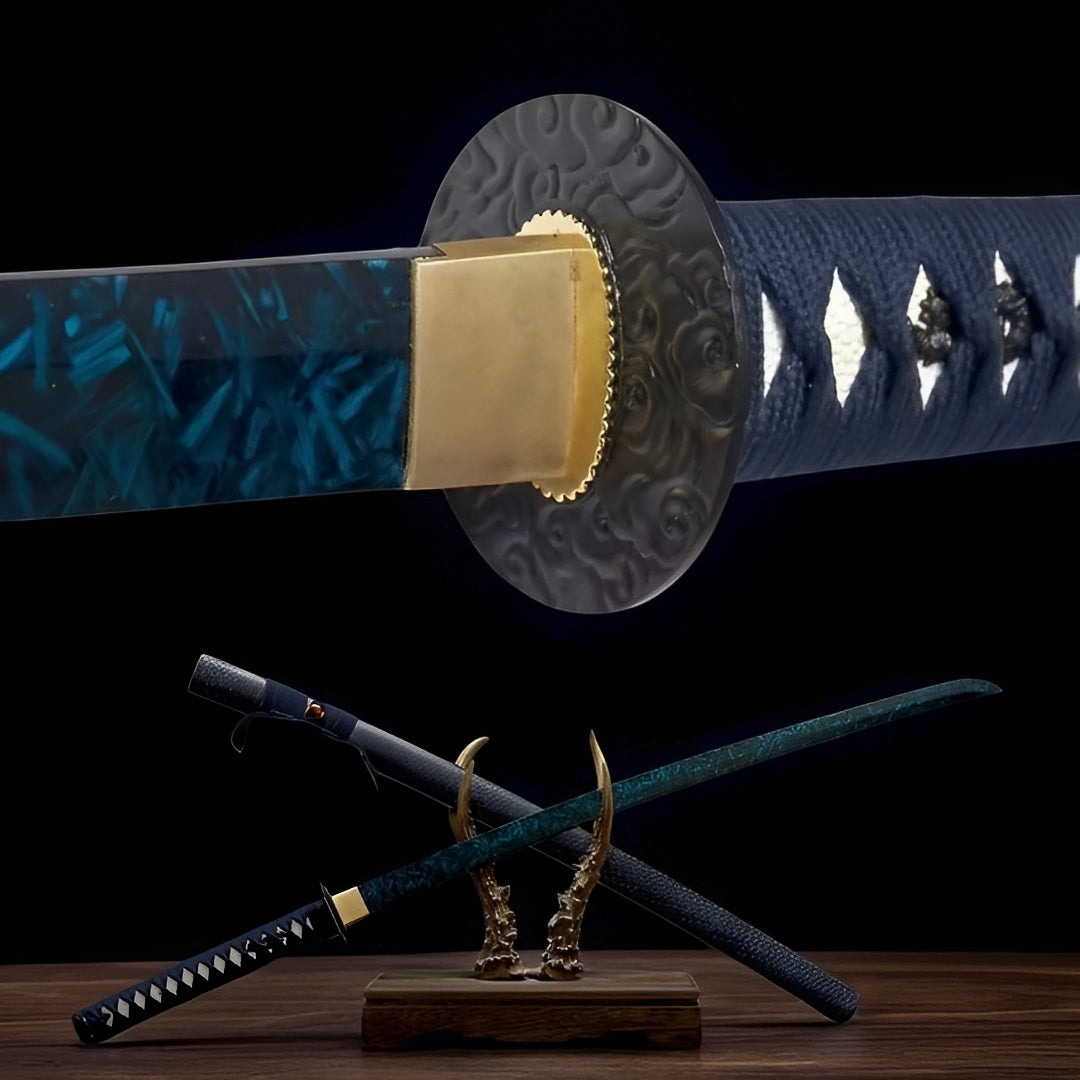
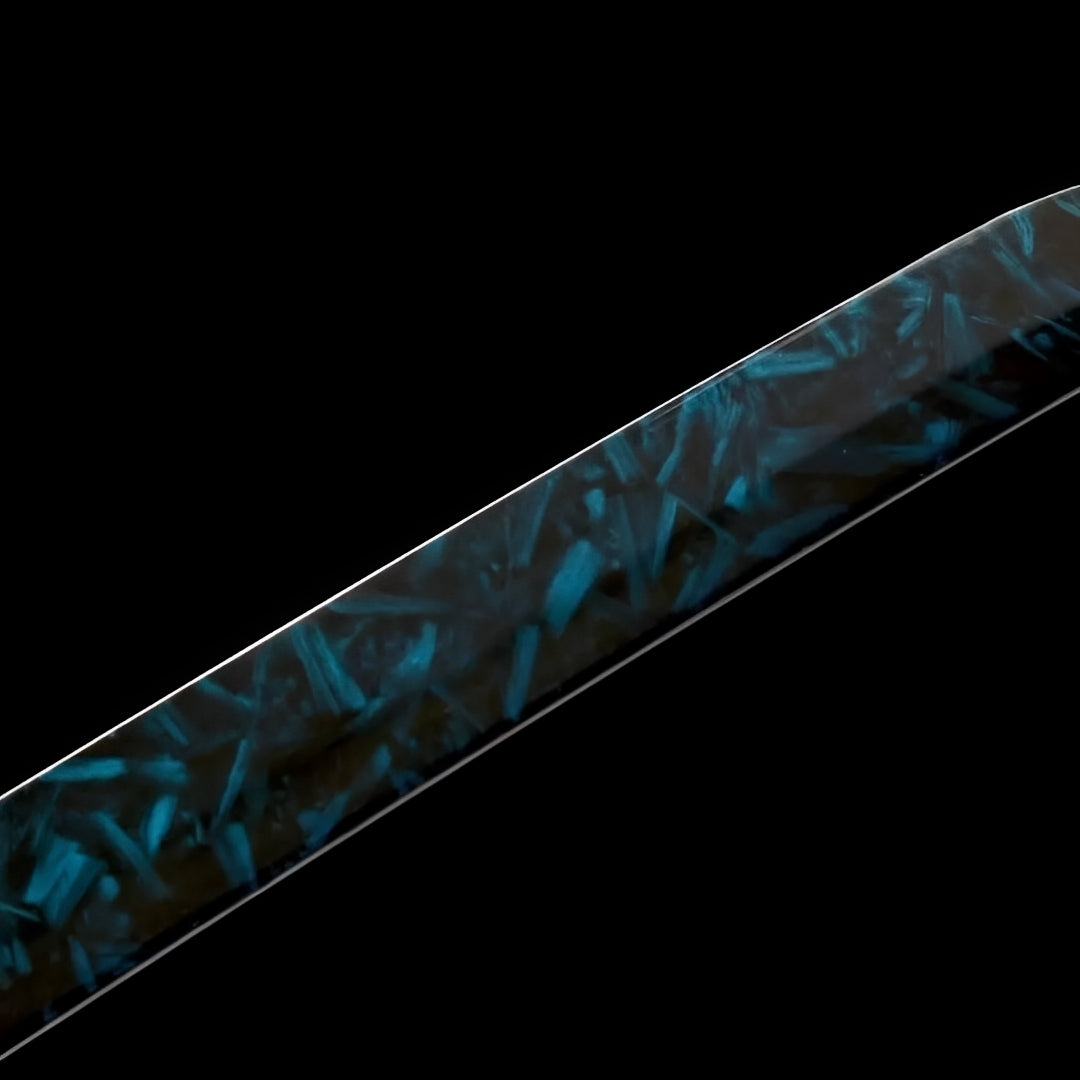
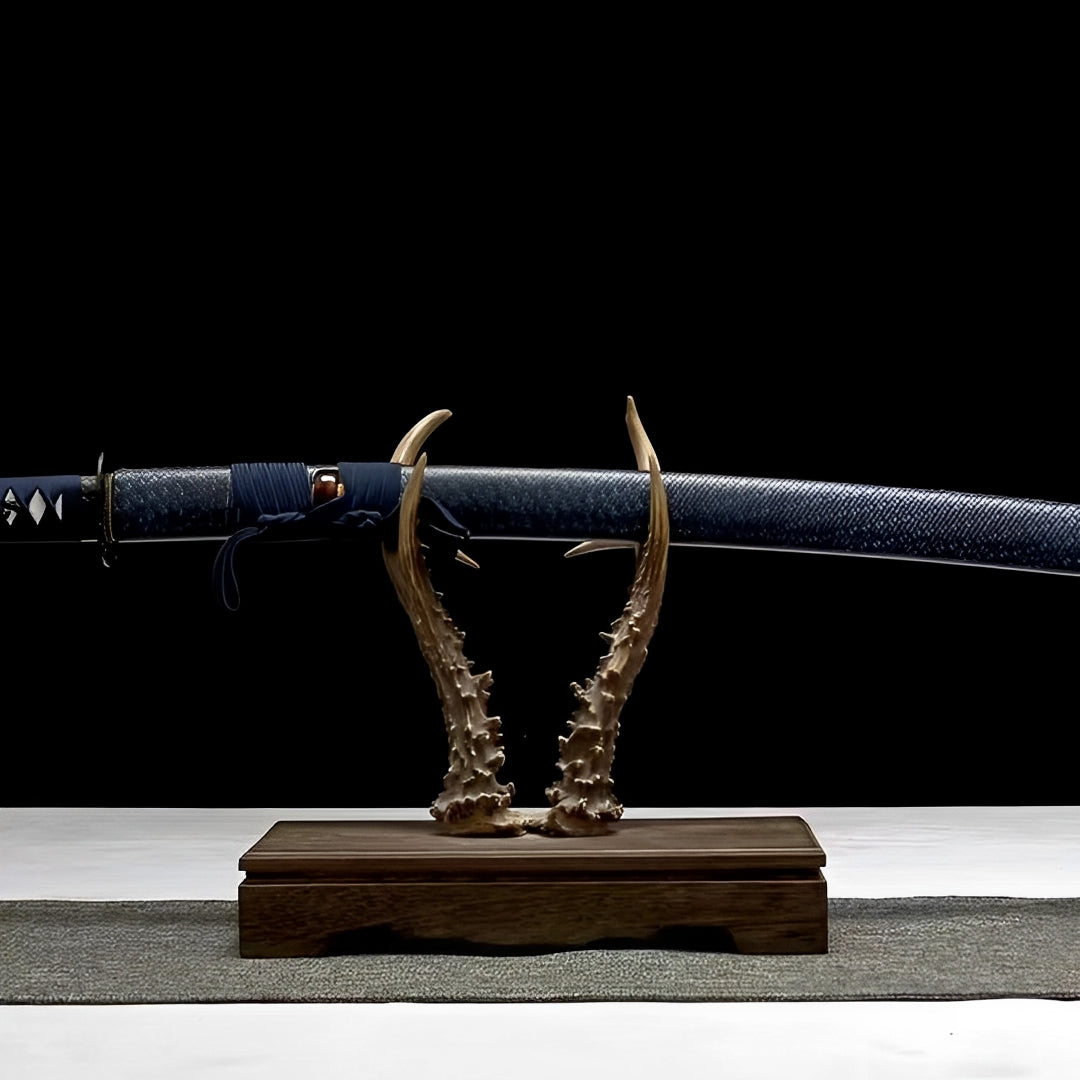
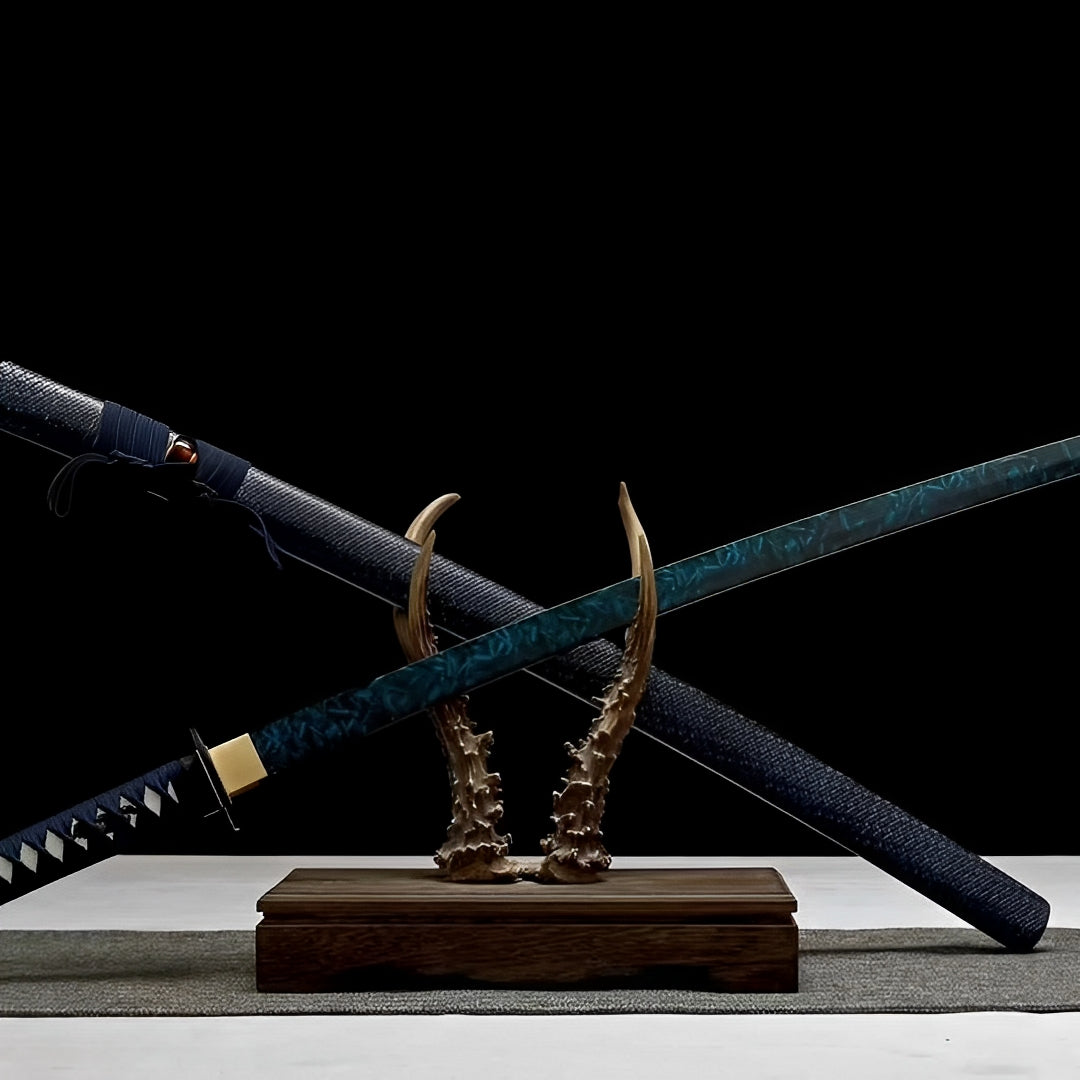
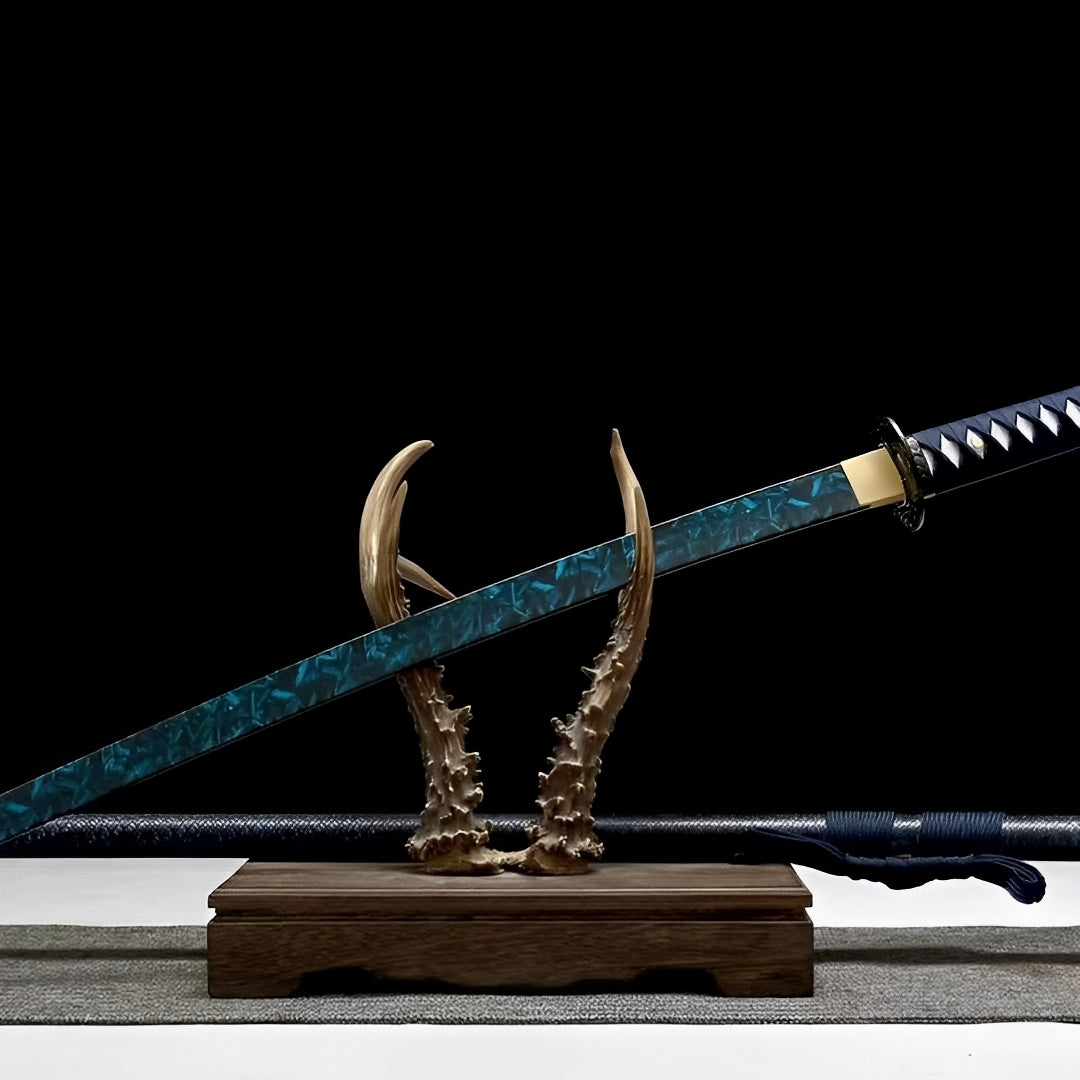
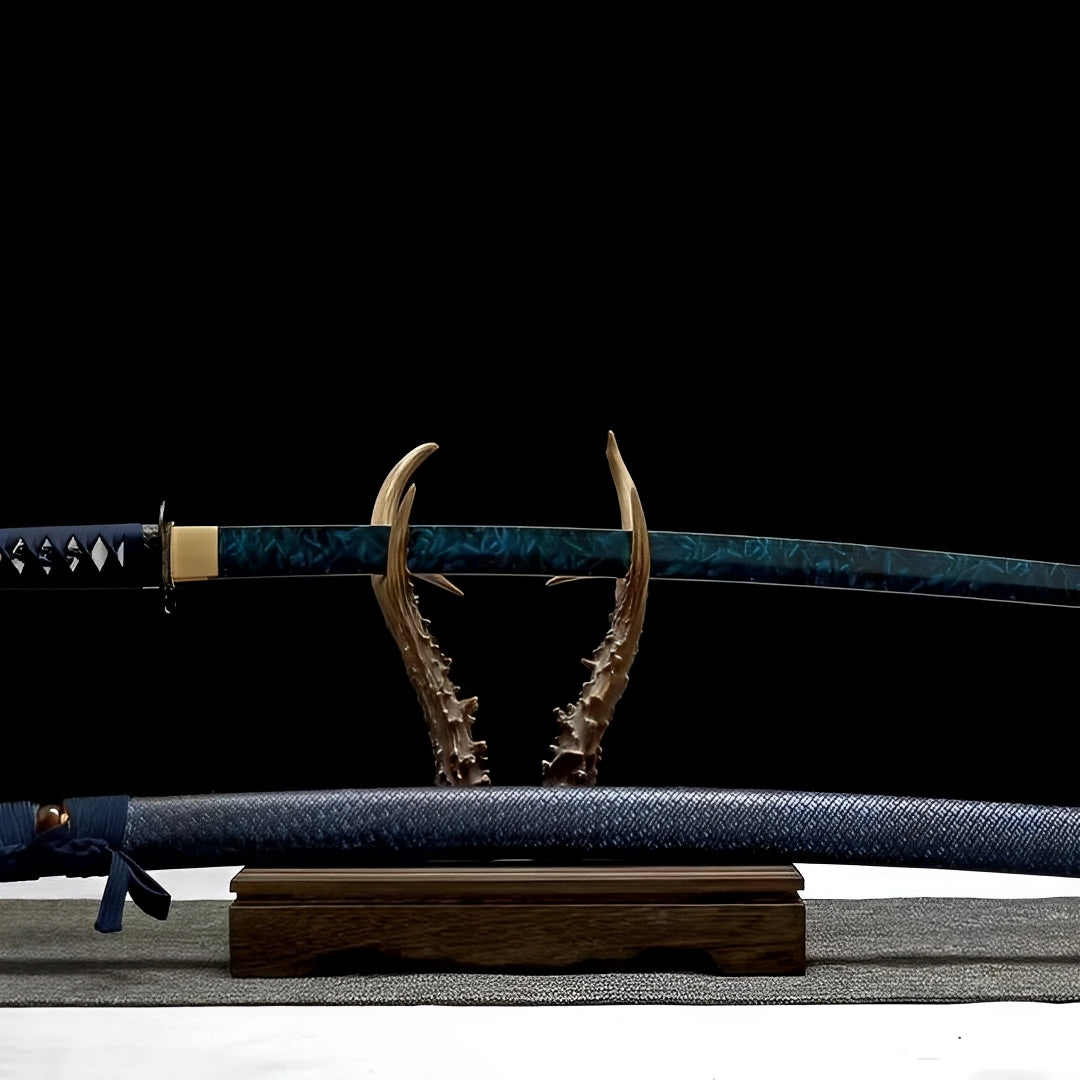
Why choose us
Ships within 48/72h
Forged Blade
Collector Quality
Trusted Globally
Inspired by Japan
Blue Blade Katana - 蒼結晶
Included with your order



Note: Engraving placement and orientation may vary by blade model (hamon, geometry, and flat area).
Free Shipping over $250
No Bots, No AI
Refund Guaranteed
Free Shipping over $250
No Bots, No AI
Our team is here to help with any questions or concerns.
We’re always happy to assist you — don’t hesitate to reach out.
Why choose us
Ships within 48/72h
Forged Blade
Collector Quality
Trusted Globally
Inspired by Japan

Blue Blade Katana - 蒼結晶
Specifications
- Handmade
- SHARP
- Blade: 1060 Carbon Steel
- SAGEO & ITO in Cotton
- Synthetic Rayskin
- Full Tang
- Iron Tsuba
- Total size: 105cm / 41 (in)
- Blade size: 72cm / 28 (in)
- Blade width: 3,2cm / 1.2 (in)
- Blade thickness: 0,7cm / 0.27 (in)
- Handle size: 30cm / 11.8 (in)
Blue Blade Katana - Ocean Current Artisan Swirl
Witness metalwork become liquid art with the Blue Blade Katana, sword where steel flows like water. This masterful artisan technique blade refuses static surfaces - deep teal currents swirling across steel suggesting ocean depths in perpetual motion, each pattern unique as fingerprints proving no two craftsmen achieve identical results, the entire piece celebrating moment when technical mastery transcends into artistic expression. Not weapon with decoration but steel transformed into canvas, asking whether you appreciate swords as functional tools or recognize when craftsmanship elevates utility into gallery-worthy sculpture.
Mokume-Gane Flow Mastery
The blade's swirling pattern evokes mokume-gane (木目金 - "wood grain metal"), traditional Japanese metalworking technique laminating different colored alloys then manipulating layers creating organic patterns resembling wood grain, flowing water, geological strata. Genuine mokume-gane requires master-level skill - stacking dissimilar metals, forge-welding under precise temperatures, carving through layers revealing patterns, the entire process demanding metallurgical knowledge, artistic vision, physical technique perfected across decades.
This flowing metal blade channels that aesthetic whether achieving authentic lamination or sophisticated surface treatment mimicking the effect. Either represents significant craftsmanship - true mokume-gane demands materials science expertise and blacksmithing mastery, while quality surface treatments require understanding color theory, pattern design, application techniques ensuring durability. The swirling teal-on-deeper-teal creates mesmerizing effect suggesting constant motion despite solid steel.
Traditional Japanese swordsmiths occasionally created hada (肌 - skin/surface pattern) through folding techniques, the steel's grain creating subtle patterns visible after polishing. Master polishers spent careers learning reveal these patterns optimally, understanding which angles, which lighting, which final touches made barely-visible structures emerge dramatically. The pattern revelation sword continues that tradition of metalworkers and finishers collaborating creating beauty neither could achieve alone.
The specific pattern style - neither perfectly linear nor completely chaotic but organic flow suggesting natural forces - requires sophisticated understanding of how metal moves when worked. Random swirls look amateur; controlled flow suggesting natural phenomena demonstrates mastery distinguishing journeyman from master craftsman.
Metallurgy enthusiasts recognize pattern complexity indicating either authentic multi-metal lamination or exceptional surface finishing. Either interpretation justifies premium positioning - genuine mokume-gane commands astronomical prices due to rarity and difficulty, while perfect surface treatments require artistic talent and technical precision few possess.
Deep Ocean Current Psychology
The specific teal shade creates this blade's emotional resonance - not tropical shallow-water turquoise suggesting playfulness, not bright electric blue screaming synthetic energy, but deep ocean teal evoking fathoms where pressure builds, light fades, where familiar physics behave strangely. This pressure depth blade color psychology suggests power held under control, complexity beneath simple surface, depths rewarding those patient exploring thoroughly.
The swirling pattern specifically suggests underwater currents - those invisible rivers flowing through oceans, warm water meeting cold creating boundaries oceanographers map, currents that determine weather patterns, that carried ancient navigators across impossible distances, that concentrate nutrients feeding entire ecosystems. The current wisdom sword acknowledges that greatest powers often operate invisibly, that surface appearances reveal little about underlying forces shaping reality.
Traditional Japanese culture particularly appreciated water symbolism - koi swimming upstream representing perseverance, rivers flowing around obstacles demonstrating adaptability, ocean depths suggesting mystery and potential. The teal blade participates in those centuries of aquatic metaphor, proving new interpretations can honor old wisdom without merely copying historical examples.
Color psychology associates teal with emotional balance, clarity amid complexity, healing through understanding - appropriate for blade whose pattern rewards sustained viewing revealing new details each examination. The contemplative current blade refuses instant gratification, instead offering sustained relationship where appreciation deepens through repeated engagement.
Abstract Art Legitimacy
Museums increasingly recognize decorative arts - swords, ceramics, textiles - as legitimate art forms rather than craft inferior to painting/sculpture. This gallery-worthy blade specifically demonstrates why: the pattern creates composition balancing chaos and order, the color palette shows sophisticated restraint, the execution quality evident in consistent pattern throughout blade length. That artistic intentionality separates decoration from art, pretty from profound.
The swirling pattern invites interpretation without demanding specific reading. Viewers might see: ocean currents, wind patterns, geological strata, abstract expressionism, celestial nebulae, cellular structures under microscope - all valid interpretations coexisting without contradiction. That interpretive openness defines successful abstract art, enabling personal connections impossible through literal representation.
Traditional Japanese aesthetics often blurred boundaries between functional object and art piece - tea bowls achieving museum status, sword guards commanding prices exceeding blades they protected, textile fragments preserved as cultural treasures. The functional art blade continues that tradition refusing false dichotomy between useful and beautiful, accepting objects can serve practical purposes while achieving aesthetic excellence deserving artistic recognition.
Contemporary metalworkers increasingly exhibit in fine art galleries rather than craft shows, their work recognized as sculpture using metal rather than "mere" metalworking. This blade positioned at that intersection - functional sword, artistic expression, technical demonstration, philosophical statement about beauty emerging from constraint (steel's properties limit possibilities but enable achievements impossible in other media).
Navy Sophistication Anchor
The deep navy handle and saya create necessary grounding preventing teal blade from floating visually, the dark elements providing psychological weight anchoring artwork blade to physical reality. This anchored art sword demonstrates sophisticated design understanding that brilliant elements require restraint surrounding them, that showcasing beauty often means strategic plainness allowing focal points commanding attention.
The navy specifically complements rather than competes with teal blade - both water-associated hues creating unified aquatic theme, the darker navy suggesting depths from which lighter teal currents rise. That color harmony demonstrates design intentionality where every choice serves overall vision rather than random pretty elements assembled hoping they work together.
Traditional sword mounting (koshirae) conventions emphasized balance - elaborate blades received restrained furniture, simple blades got ornate fittings, each component's visual weight calculated ensuring no element overwhelmed others. The balanced composition blade respects those principles, its navy elements providing sophisticated backdrop enabling teal blade's artistry without competing through garish excess.
The white diamond pattern on handle provides minimal accent preventing complete darkness becoming oppressive, the geometric precision contrasting nicely against blade's organic flow. That calculated variety - flow versus geometry, light versus dark, warmth versus cool - creates visual interest through juxtaposition rather than overwhelming through excess.
Artistic Collector Statement
This artisan appreciation piece serves collectors who've progressed beyond character replicas toward appreciating swords as artistic expressions independent from franchise associations. It announces: "I collect beautiful things because they're beautiful, not because anime character wielded them." That philosophical positioning attracts mature collectors treating hobby seriously rather than casually accumulating merchandise.
The abstract pattern specifically avoids literal imagery allowing broader interpretation - it's not "dragon blade" or "tiger sword" limiting display contexts through specific symbolism. That universal appeal enables display across varied environments from traditional Japanese rooms to modern art galleries to contemporary homes where abstract aesthetics predominate.
Investment considerations favor pieces showcasing genuine craftsmanship or exceptional artistic vision. Generic factory swords depreciate; pieces demonstrating mastery maintain value among collectors recognizing quality. The pattern complexity alone signals serious production attention whether achieved through authentic metalworking or sophisticated finishing.
Photography creates stunning images - the swirling pattern catches light creating highlights and shadows that shift with viewing angle, ensuring blade never appears static. Social media particularly rewards such visual dynamism, the pattern creating images people want sharing because beauty communicates across language barriers.
The technique celebration sword particularly appeals to collectors interested in metalworking processes, appreciating how craftsmen achieve specific effects, understanding that exceptional execution requires years mastering techniques. That knowledge-based appreciation differs from emotional fandom driving character replica collecting, creating different but equally valid relationship with objects.
Care Instructions: Maintain this artisan masterwork recognizing pattern shows imperfections mercilessly - fingerprints disrupt flow, scratches mar composition, neglect wastes craftsmanship. Clean teal blade with softest microfiber cloths using straight strokes along length rather than circular motions that might catch on pattern transitions. Navy elements benefit from regular dusting; dark colors show dust readily despite appearing forgiving. Golden fittings deserve gentle polishing maintaining warm glow complementing cool teal. Display under directional lighting revealing pattern's dimensional qualities - flat overhead lighting deadens effect; angled lighting creates drama as highlights travel across swirls. Handle with appreciation that what appears "just pretty blue sword" actually represents significant technical achievement whether authentic metalwork or exceptional finishing, that pattern's organic flow required understanding how metals behave or how finishes apply, that beauty this effortless-appearing demanded effort you'll never see.
Steel flows. Currents swirl. Ocean depths frozen mid-motion. Artisan captures water in metal.
Legal Disclaimer
By purchasing from Katana Corp, you acknowledge and agree that:
- You are at least 18 years of age (or the age of majority in your jurisdiction).
- You are solely responsible for verifying and complying with all local laws and import regulations before placing an order.
- Some countries prohibit the importation of swords entirely. Katana Corp is not responsible for orders delayed, seized, or refused by customs authorities.
- All katanas and related products are sold strictly as decorative and display items. They are not intended or certified for combat use.
- Depending on the jurisdiction, swords may legally be considered bladed weapons, subject to specific restrictions or prohibitions.
- Katana Corp disclaims all liability for any injury, damage, or legal consequences resulting from misuse, abuse, or unlawful use of its products.
For full details, please refer to our Terms of Service.
Care & Maintenance
To maintain your katana's appearance and performance over time, we recommend:
- Regularly wiping the blade with a soft cloth to remove fingerprints and moisture.
- Applying a light coat of choji oil to prevent rust (for carbon steel blades).
- Storing the sword in a dry place, preferably inside its saya.
- Avoiding direct contact with hard surfaces to preserve sharpness and finish.
For more care tips, check our full maintenance guide in the FAQ section.
Behind the Blade
Every katana we offer carries the essence of centuries-old craftsmanship.
More than just a weapon, the katana symbolizes discipline, honor, and mastery.
Our artisans draw inspiration from traditional forging methods to ensure each blade reflects the spirit of the samurai — strength, precision, and soul.
Owning one is not just about aesthetics — it’s about carrying a piece of that legacy.
User Experience
This katana is designed to offer a perfect balance between blade and handle.
Its ergonomic tsuka (handle) allows a secure two-handed grip, while the weight distribution ensures smooth, fluid movement.
Whether for training, display or cutting practice, handling feels natural and precise.

The Art of Traditional Forging
Each katana we craft is born from centuries of samurai tradition.
Our master smiths shape every blade by hand, folding the steel to achieve unmatched strength, flexibility, and beauty.
This time-honored process is not just about creating a weapon? it’s about preserving a legacy of discipline, honor, and artistry.
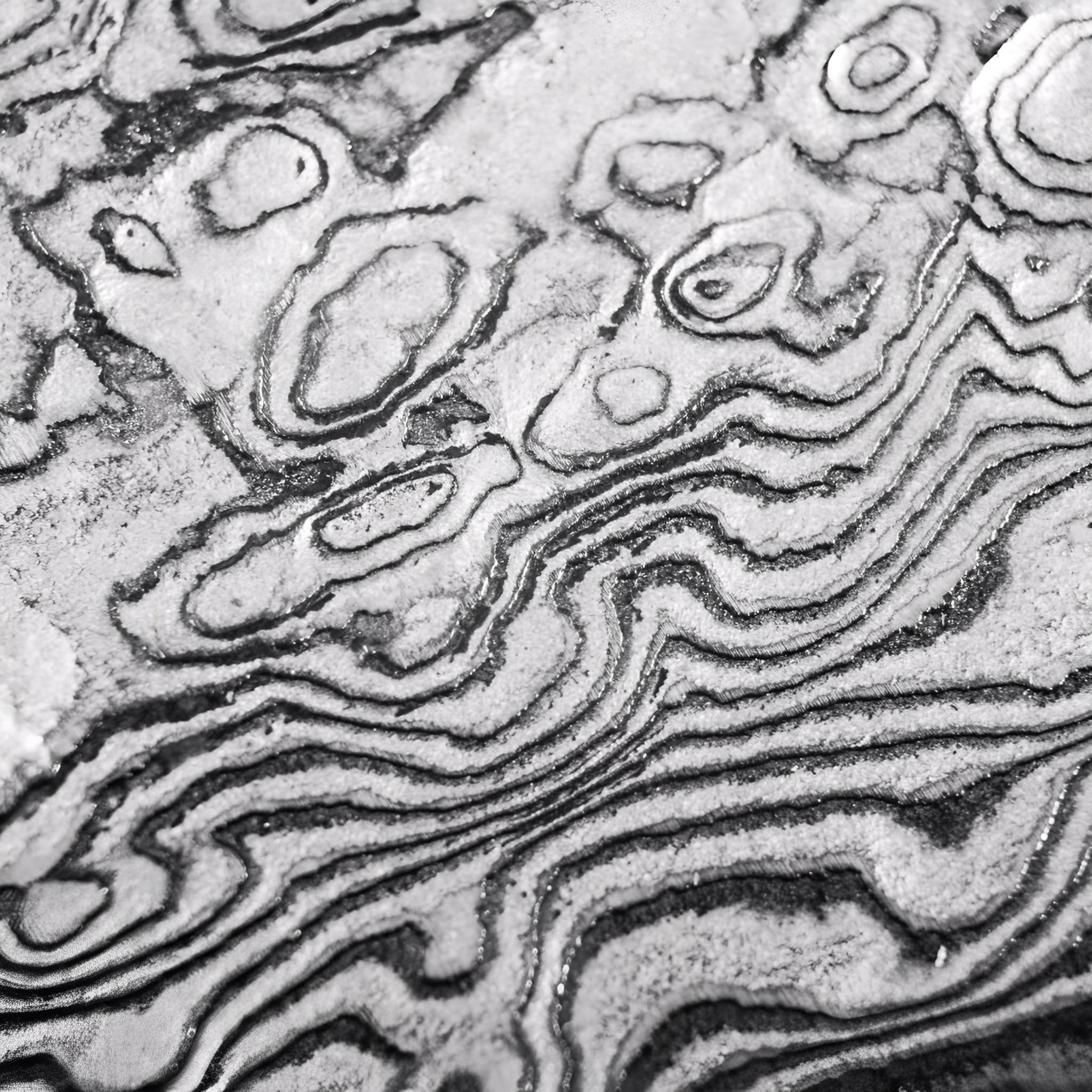
Materials Chosen Without Compromise
We select only the highest-grade steels and authentic fittings to ensure every katana is both a masterpiece and a reliable companion.
From the flawless hamon line to the perfectly balanced tang, each detail is carefully inspected to meet the highest standards of performance and aesthetics.
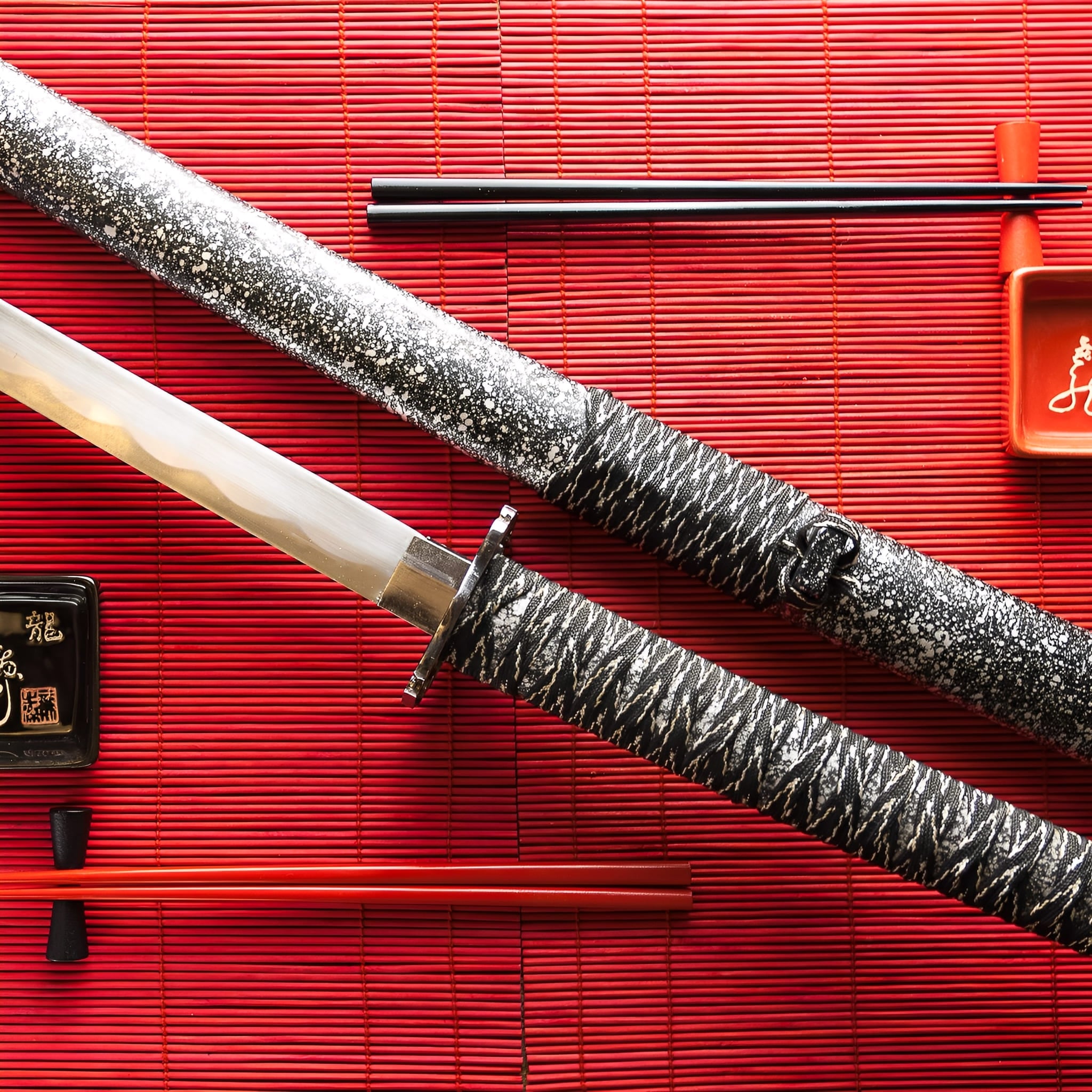
More Than a Sword, A Lifelong Legacy
Owning a handmade katana is an experience that goes beyond the blade itself. It’s holding history, tradition, and craftsmanship in your hands.
Whether displayed as a work of art or wielded with precision, your katana will stand as a symbol of timeless skill and dedication for generations to come.
-
Key Destinations
United States: 5–7 days
Canada: 5–7 days
Australia: 6–9 days
Denmark: 4–6 days
Netherlands: 3–5 days
Sweden: 4–6 days
Switzerland: 3–5 days
Finland: 5–7 days
Singapore: 6–8 days -
Central European Partners
France: 2–3 days
Germany: 3–5 days
Spain: 4–6 days
Italy: 4–6 days
Belgium: 3–5 days
Austria: 4–6 days
Ireland: 4–6 days
Poland: 4–6 days
Portugal: 4–6 days -
Extended EU Network
Czechia: 4–6 days
Hungary: 4–6 days
Slovakia: 4–6 days
Slovenia: 5–7 days
Romania: 5–7 days
Bulgaria: 5–7 days
Croatia: 5–7 days
Serbia: 5–7 days
Estonia: 5–7 days
Latvia: 5–7 days
Lithuania: 5–7 days
Luxembourg: 3–5 days
Greece: 5–8 days -
FAQ’s
Visit our FAQs page to find answers to common questions.